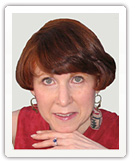Articles: Organizational Effectiveness Archives
Flexibility For Senior Professionals
Most of the focus on flexible work arrangements in organizations has been on the younger and mid-level professionals and those with children at home. However, increasingly, the large baby-boomer generation and the “veteran” generation before them desire to ease off while still staying connected to meaningful work for either psychic gratification or economic reasons. Firms need to be thinking about building in flexibility for them as well. There is a solid business case that benefits both the organization and the individuals.
Take a look at your seasoned people. Most of them are not “dead wood,” but rather after years of intense work and a stressful lifestyle, some of them may be looking for a change and they appreciate rewards other than money. At the same time, they may be reluctant to walk away from the ties to the firm, feeling of being useful to a business enterprise, and problem solving challenges that have been part of their lives for so long. They may be as young as 50 or as old as 75, but they are not ready to embrace the concept of retirement. They may be looking for more time for themselves, more connection to family and care for elderly parents, or the gratification of passing on their wisdom to the next generation. Why lose them? Why force them to make an all or nothing choice?
So how can those senior professionals help the firm and fit into what many firms see as a "one size fits all" environment? First of all, this is not really a radical notion. Many firms have flexible arrangement for senior professionals who have adjunct teaching positions or who are big name draws with political connections. According to a Harvard study over a 60 year period of 1,400 elderly people (reported in "Aging Well" by George Vaillant), older workers who are happiest and most productive chose work that provides them the opportunity to be creative and to make younger friends. Assuming basic needs are met, those factors are more important to workers age 55 and up than dollar income the study concludes.
Some of the non-traditional arrangements that have worked for senior professionals in firms and the corporate world are:
- Performing intense project work for a given amount of time, followed by a break of one to several months before embarking on the next intense project.
- A major role in mentoring and training junior professionals together with maintaining long-time client relationships and hand-holding.
- Maintaining the firm's visibility and external relationships as an active member of community, professional and charitable organizations and boards.
- Writer and/or speaker contributing years of accumulated wisdom and experience of the firm's marketing efforts.
Each of these arrangements provides solid contributions while permitting the individual to cut back from a highly pressured daily work life and enables the firm to educe compensation.
Below are some of the factors for a cost/benefit analysis to include flexibility for senior professionals as part of your flexible workplace culture.
Costs to the firm:
- Administrative process for handling non-traditional scheduling, roles, and compensation
- Office space
- Loss of some of the billable hours they would have provided if they were willing to remain as full-time fee-earners
Benefits to the firm
- Retaining talent and connections to clients
- Institutional memory
- Decreased compensation costs
- Opportunities for mid-level professionals to take on more responsibility
- Succession planning and a transition period to smoothly transfer client responsibilities and relationships
- Greater enthusiasm and productivity during the hours these senior professionals work
In order to make “non-traditional” arrangements work successfully, in addition to developing the individual details and logistics, two attitudinal aspects need to be addressed. First work expectations other than compensation on the part of the individual senior professional as well as the others in the firm directly affected must be identified and communicated. What is highly important to them in their work environment, and how can these expectations be fulfilled? (An assessment tool we use can help identify them and structure a way to manage them.)
Secondly, there is the issue of getting over defining success as an all-out, 24/7 effort as well as making more money (as an individual) every year. If other important aspects of personal success based on individual goals and desires are given greater respect in the workplace culture, more people will feel successful and fulfilled.
Incorporating flexibility into workplace culture and organizational structure makes good business sense in tight economic times as well as more prosperous times – maybe more so. The firm reaps cost savings on compensation. It is a way to cut back some high salaries in areas of practice that are languishing in a down cycle without losing the expertise and client connections at a senior level. Seniors with strong loyalty to the firm may relish taking part in creating a culture representing values they have come to appreciate and felt were lacking at their firm.
© Phyllis Weiss Haserot 2004.

